► Hybrid and PHEV Toyota C-HR driven
► Doubles down on distinctive looks
► Fifth-gen hybrid system
Back in 2017, the original Toyota C-HR made quite the impact on the compact SUV market. Rather than chase practicality, style seemed to be the C-HR’s main purpose. With the availability of frugal hybrid engines, it combined sensible running costs with a dramatic coupe-like roofline and a distinctive angularity. It seemed a gamble at the time, but it’s one that’s paid off handsomely for Toyota even if it wasn’t quite one of the best SUVs out there.
After six years on sale, it’s time to say hello to its replacement. It’s no surprise to hear that Toyota has concentrated on delivering more of what made the original C-HR stand out – wacky coupe-inspired styling, hybrid drivetrains and its SUV-style attitude. It’ll arrive here along with its TNGA-C platform mate, the Toyota Prius in 2024.
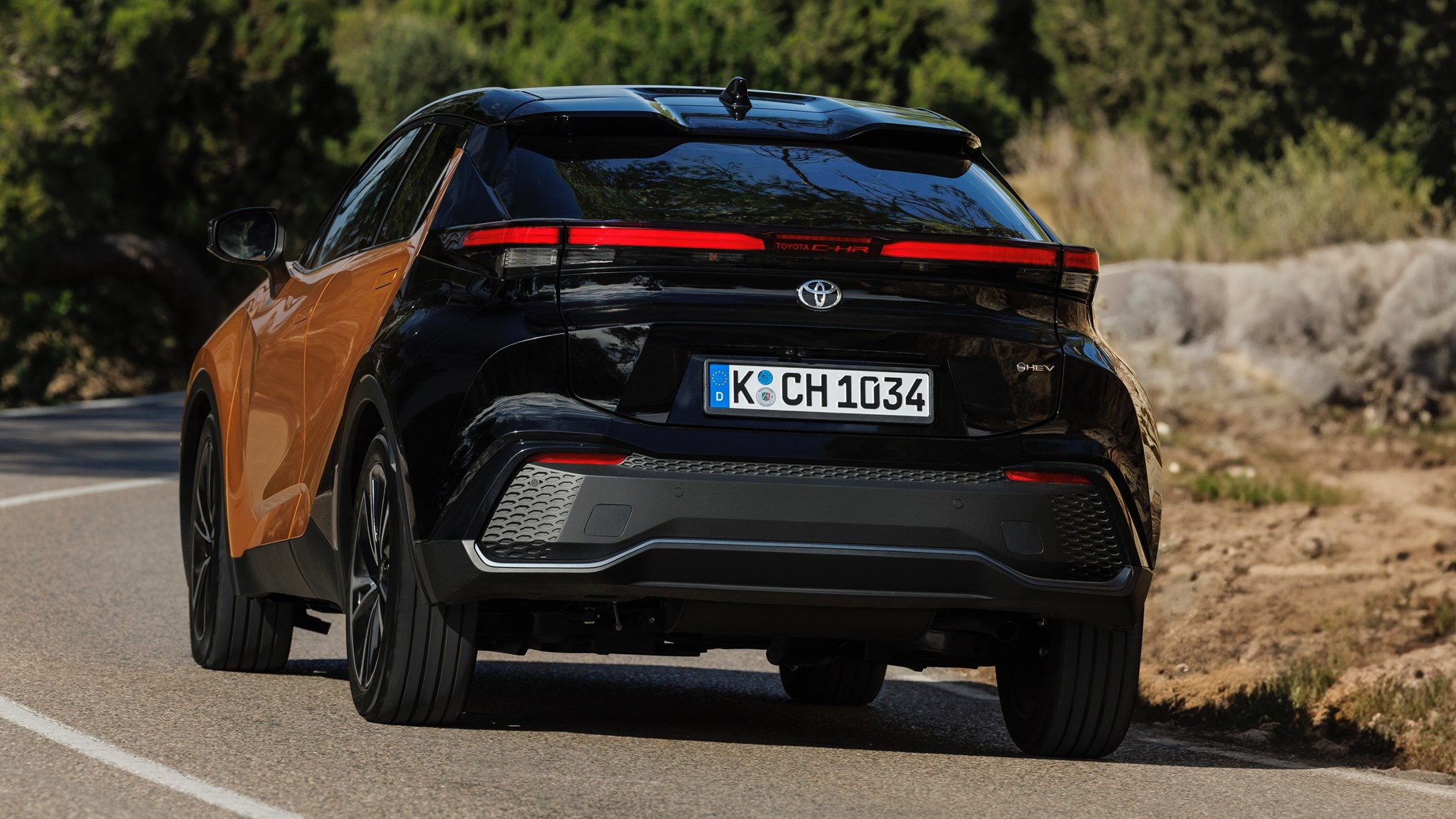
What’s new about the 2023 C-HR?
Quite a lot, even if the styling is understandably evolutionary. It’s the latest model in the Toyota New Global Architecture (TNGA) family, which encompasses front-, rear- and all-wheel drive configurations, as well as a variety of wheelbases. This platform is so prevalent in Toyota’s line-up that 80% of models by volume will be underpinned by it by the end of 2023.
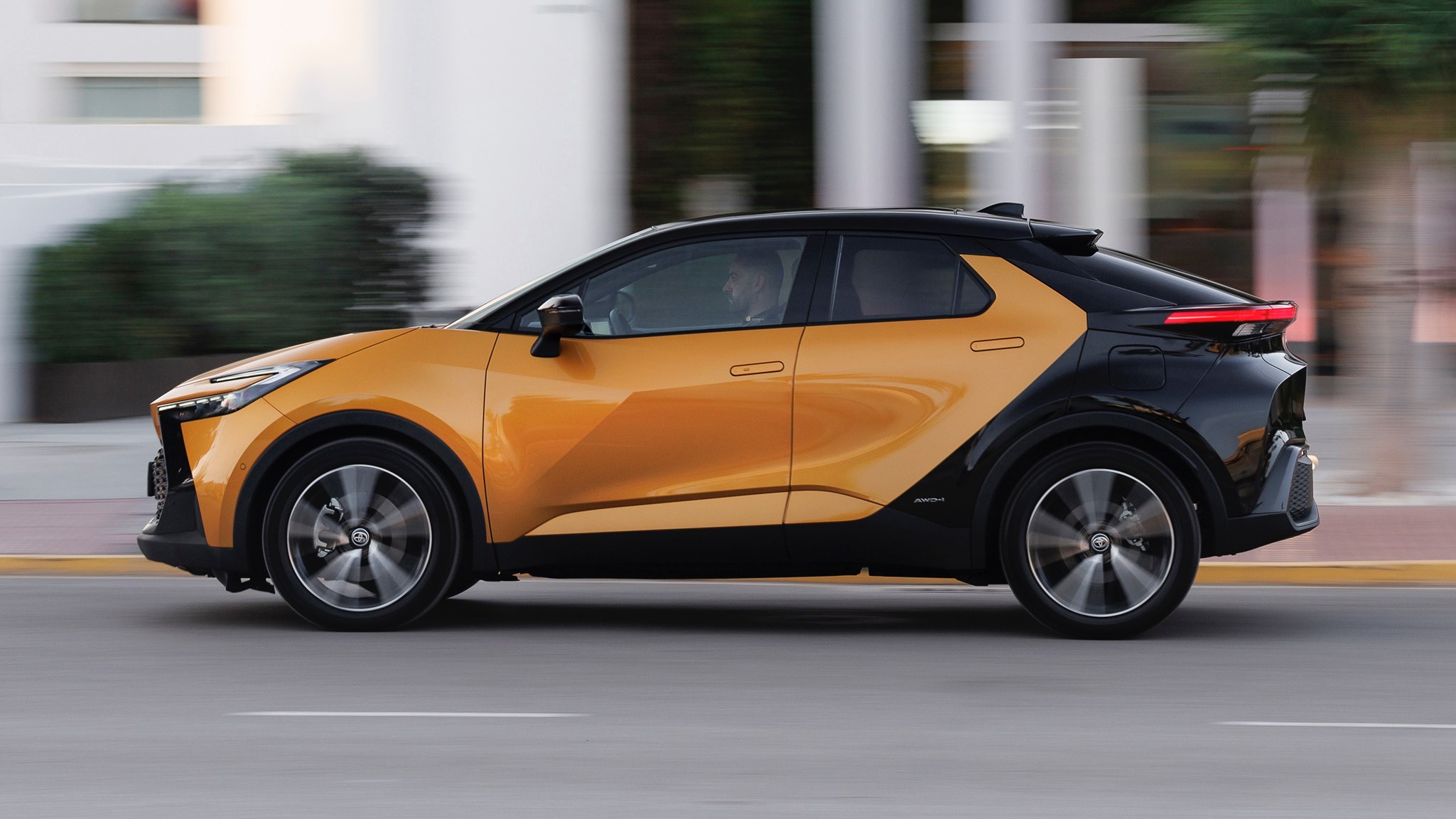
The looks aren’t a surprise, so you get a sloping roofline, while the LED lights front and rear are much more integrated than before, with the huge rear clamshell tailgate merging very effectively into them. The door handles are now the pop-out variety, like a Range Rover Velar’s, doing away with the old Alfa Romeo-like concealed rear door pulls. The biggest change is that the rear-side windows are (very slightly) larger, bringing improved rear visibility.
The 1.8-litre self-charging hybrid features Toyota’s fifth-generation drive system, which promises less mooing than before when you’re cracking on and a heap more efficiency. Most importantly, it’s available as a plug-in hybrid for the first time using the brand’s third-gen PHEV gubbins. It shares the same 2.0-litre four-cylinder engine as the more potent self-charging model (a carry over from the old car), but you get a 13.8kWh lithium-ion battery pack for a claimed range of 41 miles of electric running – and its CO2 rating stands at just 19-20g/km, making this a very company car-friendly choice.
What’s it like to drive?
The C-HR ranges in power from 138bhp for the 1.8-litre version, via 195bhp for the 2.0-litre full hybrid, to a very healthy 220bhp for the range-topping plug-in. In some markets you can have four-wheel drive provided by an electric motor on the back axle, but that’s not coming to the UK.
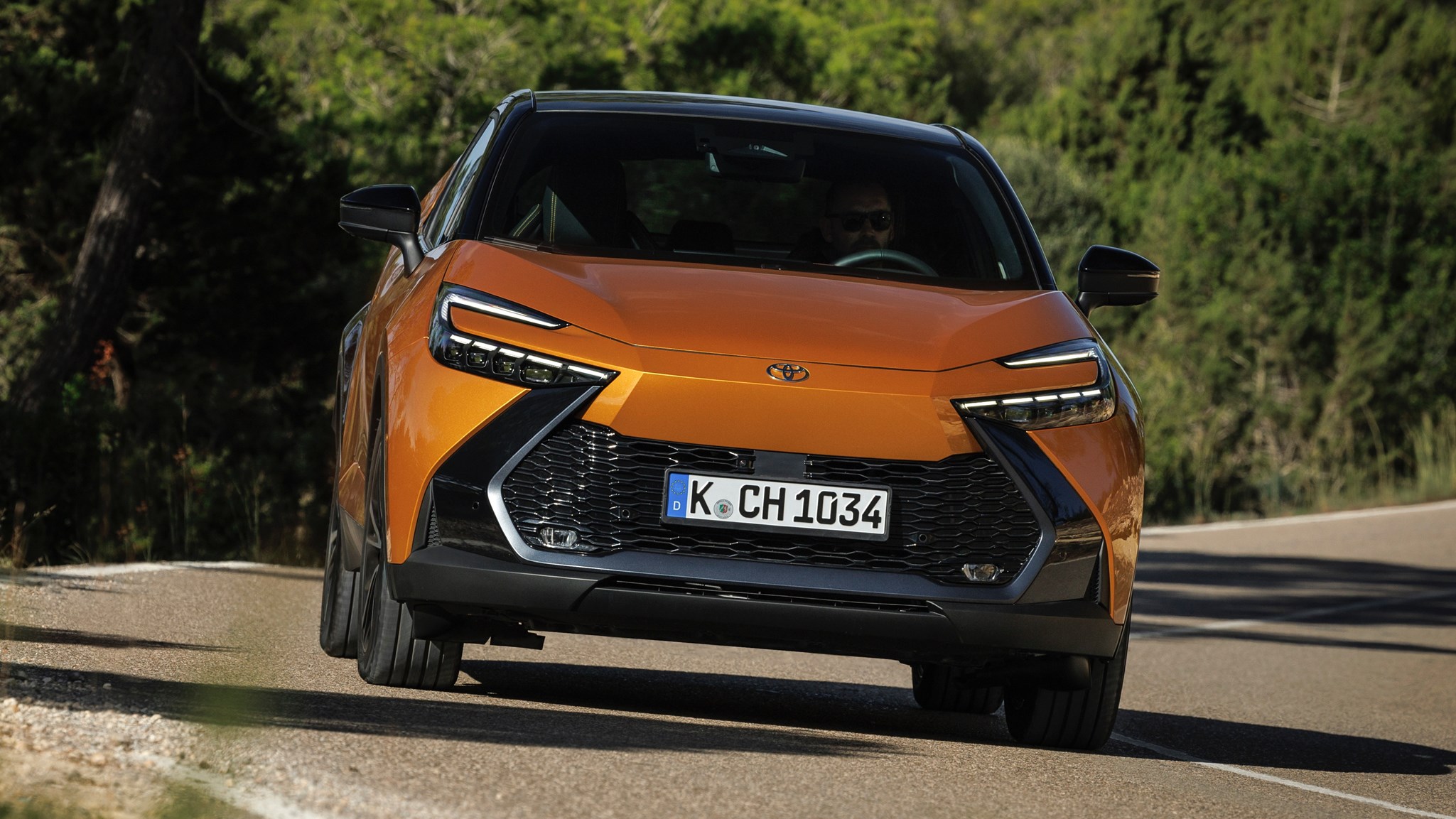
So far we’ve driven a very late prototype of the range-topping plug-in model, along with production versions of the 1.8 and 2.0-litre full hybrids. The PHEV is comfortably the quickest choice, while the EV range is good if not outstanding. The claimed 0-62mph time is 7.3 seconds and maximum speed is limited to 112mph. When you’re cracking on, it certainly feels quick and responsive on anything other than the lightest of throttle inputs.
Like the 2.0-litre self-charger, the engine note is as gruff as ever and far less sweet than Honda’s rival offering. It’s muted enough most of the time so you soon dial out its gravelly engine note and appreciate the low overall levels of noise. And yes, less mooing. Although it’ll hold revs at a constant level if you really clog it, gentler acceleration has the engine note being modulated to irritate your ears less.
Without the extra oomph of the PHEV’s big battery, the self-charging 2.0-litre gets from 0-62mph in a not especially impressive 8.1 seconds. It’s sufficient for most scenarios, although not what you’d call quick. The 1.8 is even slower at 10.2 seconds, but on part throttle it feels reasonably muscular and sounds far smoother than the 2.0-litre.
While the steering isn’t exactly brimming with feel, it’s well weighted and nicely geared. The brakes are easily modulated, blending regen and friction braking with aplomb. It’s pleasant enough to mooch along in, but push on and Toyota’s claims of improved dynamism fall it a little flat.
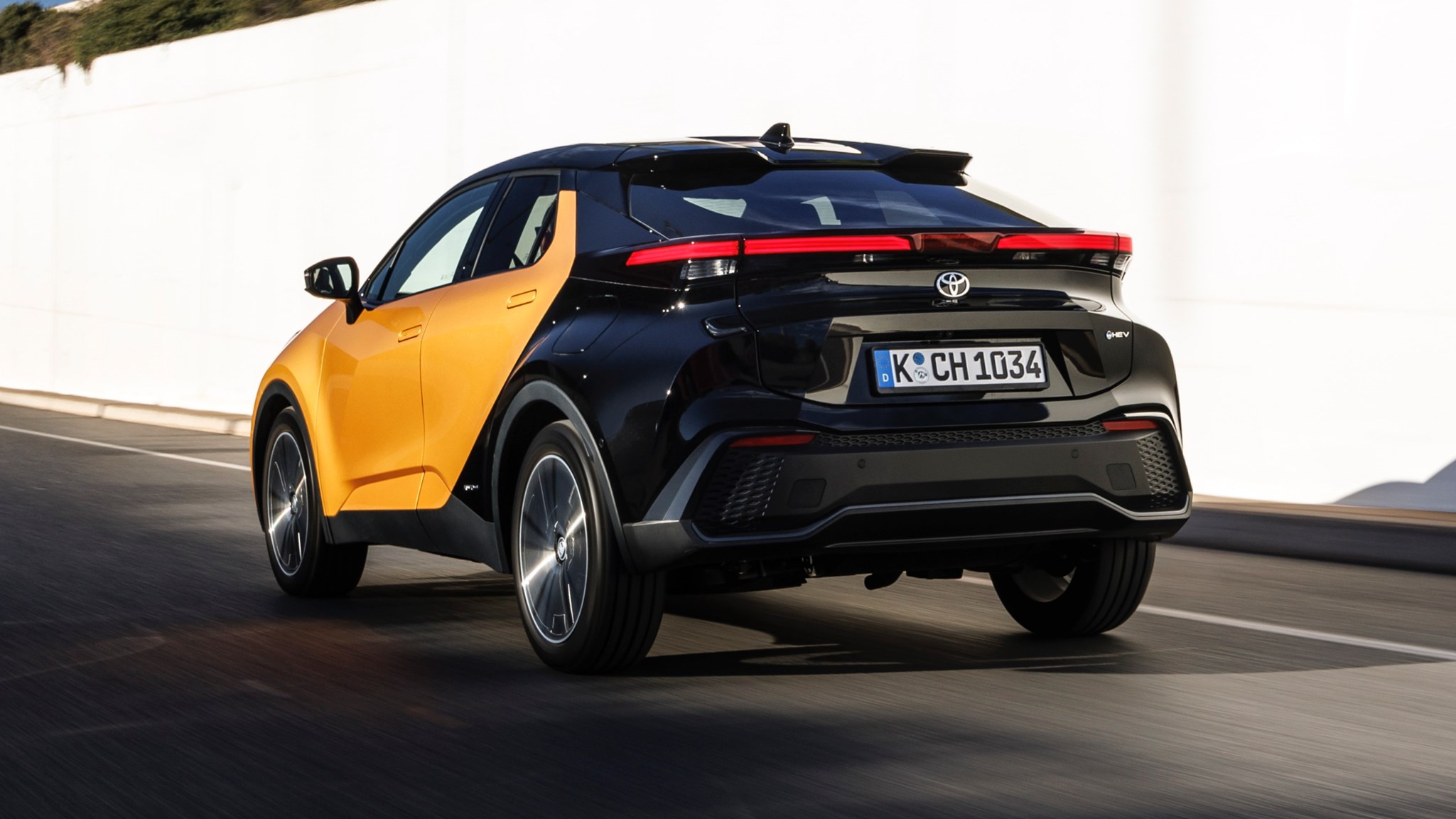
Body roll is quite noticeable and hurts the C-HR’s agility, especially through S-bends. Grip levels are OK, but it doesn’t take much for the car to push wide at the front, making for safe but not particularly involving handling. It’s difficult to make too much of a call on the ride quality due to the smooth roads we were limited to, although it feels well sorted with fluid damping and a solid feel on the road. A few ridges and imperfect surfaces reveal an underlying firmness, suggesting larger wheels may be worth avoiding in the UK.
What’s the new C-HR like inside?
Inside, the old C-HR’s vast swathes of dark surfaces has been given a big lift with contrasting soft-touch areas, and a pair of ‘sail panels’ that stretch from the dash top and into the doors. More importantly, the large central infotainment screen is nicely integrated, bright, responsive, and easy to use. It sits atop a bank of physical controls for the air conditioning and comes across as being a lot more well-considered and mature design than before.
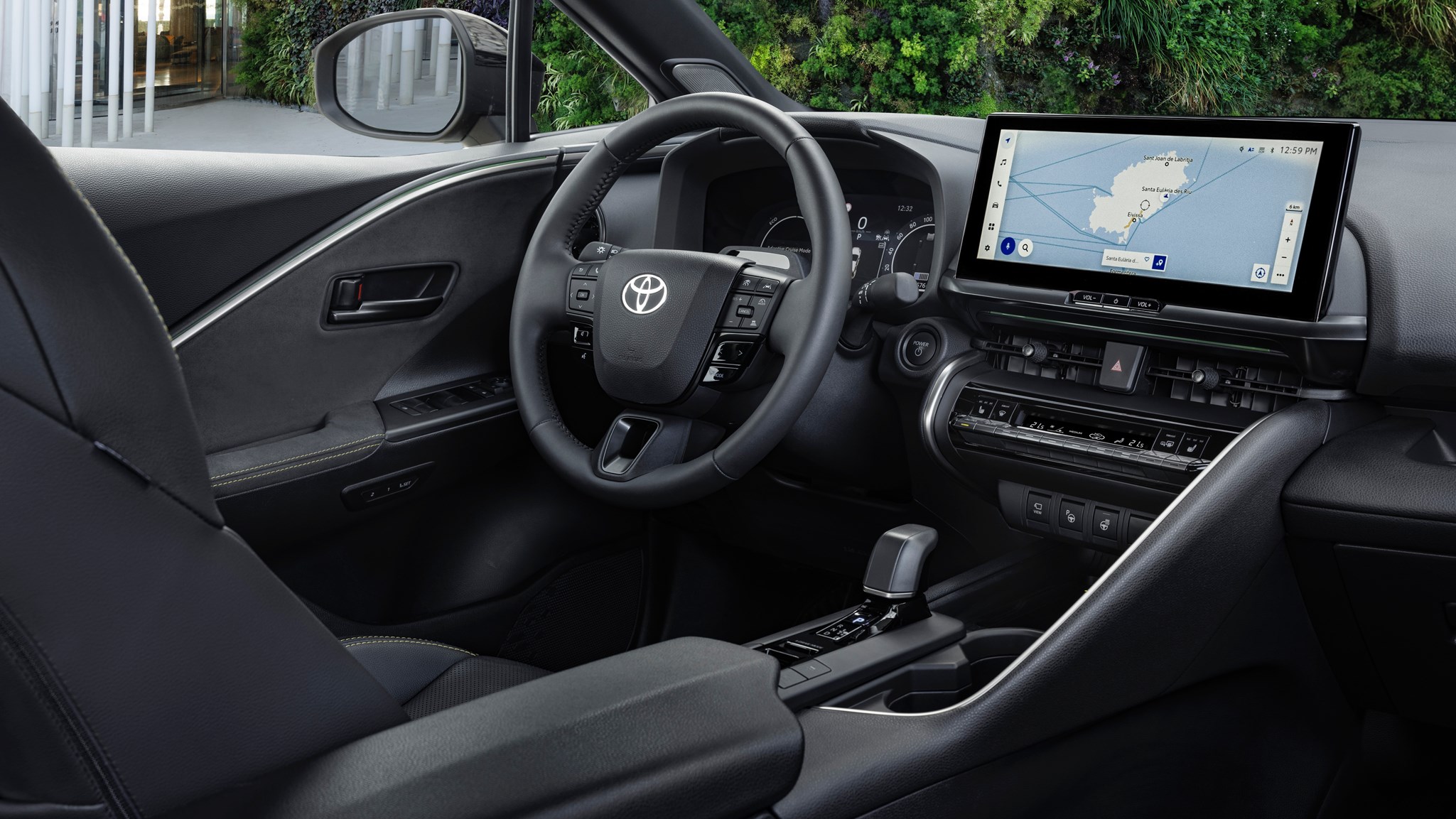
We have a game at car launches where we see how long it takes a manufacturer spokesperson to use the word ‘premium’. It didn’t take Toyota long and like their promise of dynamism, it’s a bit empty.
Yes, the interior quality up front is vastly improved over the outgoing car, and it’s tightly put together with a solid material quality. Poke your head into the back and it’s a sea of hard, unyielding plastic just like the old model.
It’s probably worth commenting on the overall accommodation and visibility at this point, seeing as they were such a criticism of the original C-HR. As before, its rakish shape does not translate into particularly good visibility – with not much to see through the letterbox-like rear screen, in particular. Over-the-shoulder isn’t as bad as it was, although that’s really damning it with faint praise.
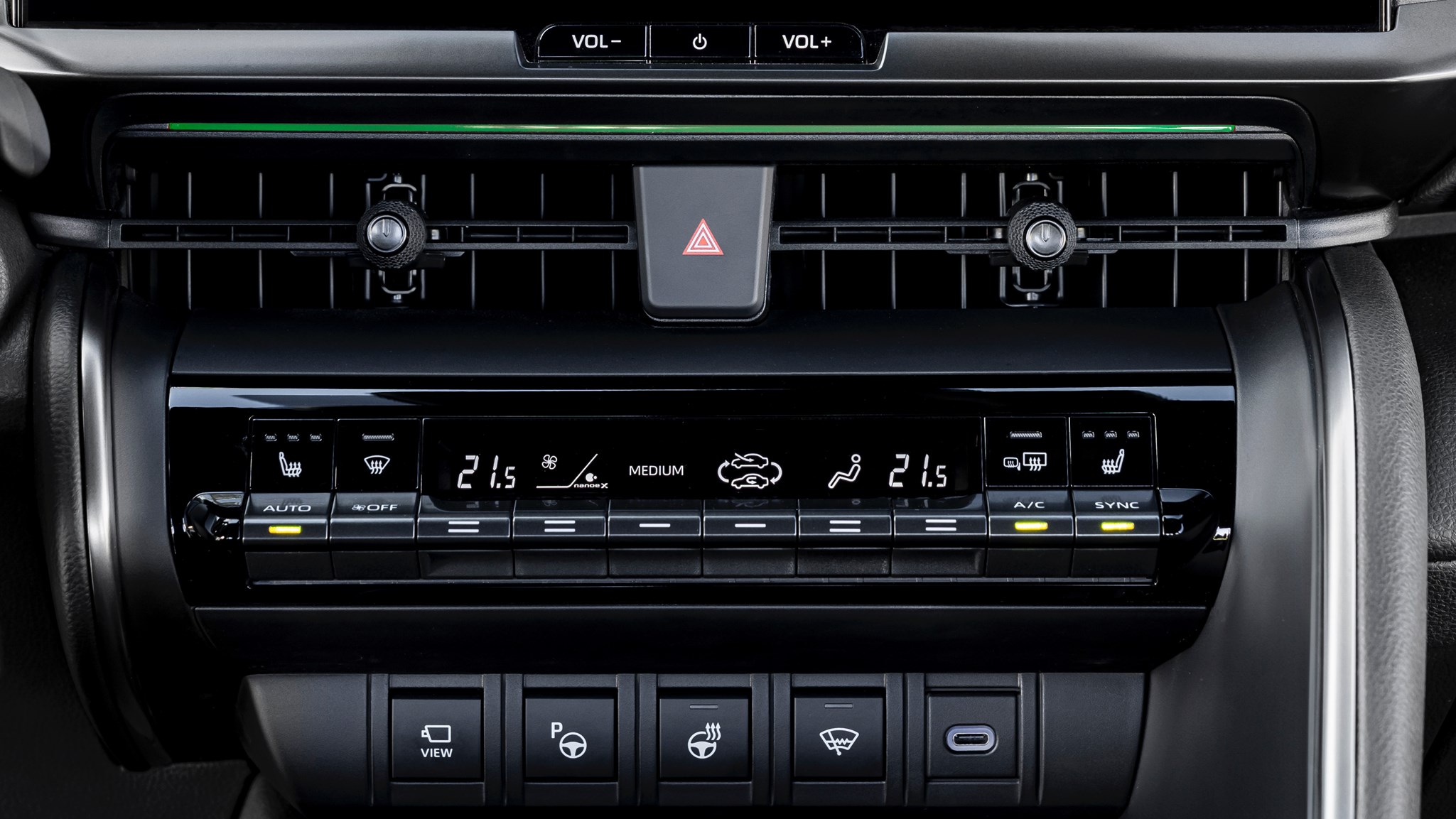
The front seats are accommodating, and we like the high-mounted centre console, but the rear is nothing to write home about. It’s not as dark as before, and the addition of a panoramic glass roof certainly improves things. But a six-footer is not going to fit at all comfortably behind someone similarly tall. A family car this is not.
Verdict
The Toyota C-HR always stood out from the crowd, and thanks to its range of striking colours, two-tone paint jobs, and angular styling, this is still very much the case. But it’s up against some me-too rivals now, and as such, it needed to improve the old car’s weak points. For. the most part, Toyota has done just that.
The new 2023 Toyota C-HR is solid, stands out, is capable of over 50mpg in the real world with ease, and is a refined drive that’s easy to live with. It takes all the best bits of the old car, improves on those, and undoes many of its main failings. If cars were bought purely on rational grounds, the C-HR wouldn’t get a look in against legions of Skoda Kamiq, Nissan Juke and Ford Puma out there – but it does, and that’s undoubtedly going to continue.
If the C-HR does appeal, we’d stick to the 1.8 hybrid. It’s not fast, but given the car’s slightly stodgy handling it’s enough. Besides, there’s a handy saving to be made, it’s more refined and you gain a bit more boot space, too.